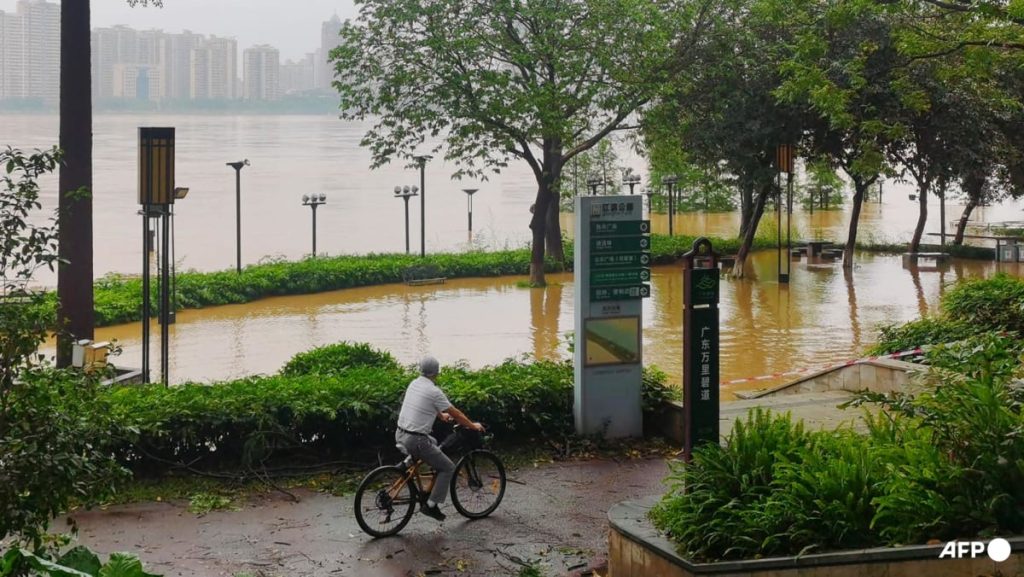Guangdong province in China’s manufacturing heartland is currently experiencing heavy rain, with meteorological authorities forecasting thunderstorms and strong winds in the coastal waters bordering major cities such as Hong Kong and Shenzhen. Neighbouring provinces like Fujian, Guizhou, and Guangxi are also expected to see short-term heavy rainfall. The National Meteorological Centre anticipates that the main impact period of strong convection will last from daytime until night, potentially causing disruptions and damage in the affected areas.
Guangdong province is home to around 127 million people, making it one of China’s most densely populated regions. The town of Jiangwan has already experienced landslides due to heavy rain, resulting in injuries and trapping individuals. State media reported on the destruction caused by the landslides, showing waterfront homes destroyed by mud and people seeking shelter in a soaked public sports court. The situation is further exacerbated by flooding predicted to reach as high as 5.8m above the warning limit in Pearl River tributaries on Monday morning, posing a significant risk to affected communities.
China has been plagued by extreme weather events in recent years, including severe floods, droughts, and record heatwaves. Climate change, fueled by human-emitted greenhouse gases, is a major contributing factor to the increasing frequency and intensity of these extreme weather events. As the world’s largest emitter of greenhouse gases, China is particularly vulnerable to the impacts of climate change, highlighting the urgent need for mitigation and adaptation measures to address the growing threat of extreme weather events in the country.
The continued heavy rain and thunderstorms in Guangdong and surrounding provinces underscore the importance of preparedness and resilience in the face of extreme weather events. Authorities are urging residents to stay vigilant and take necessary precautions to ensure their safety during the ongoing weather disturbances. The impact of climate change on extreme weather events cannot be understated, emphasizing the need for concerted global efforts to reduce greenhouse gas emissions and mitigate the environmental degradation that exacerbates these phenomena.
The images of devastation caused by heavy rain and landslides in Jiangwan serve as a stark reminder of the destructive power of extreme weather events and the vulnerability of communities in the face of natural disasters. As the effects of climate change become more pronounced, it is imperative for governments and individuals to prioritize climate action and implement sustainable practices to mitigate the risks associated with extreme weather events. The severe weather conditions in China serve as a sobering example of the urgent need for collective action to address the escalating threats posed by climate change and ensure a more resilient future for all.
As China grapples with the aftermath of severe weather events, it is crucial for policymakers, businesses, and individuals to work together to enhance preparedness, improve infrastructure, and implement climate-resilient practices to mitigate the impacts of extreme weather events. The heavy rain and flooding experienced in Guangdong and neighboring provinces highlight the need for proactive measures to address the growing risks posed by climate change and build a more sustainable and resilient society. By taking decisive action to reduce greenhouse gas emissions and adapt to a changing climate, China can help protect its communities and natural environment from the devastating effects of extreme weather events and secure a more sustainable future for generations to come.


